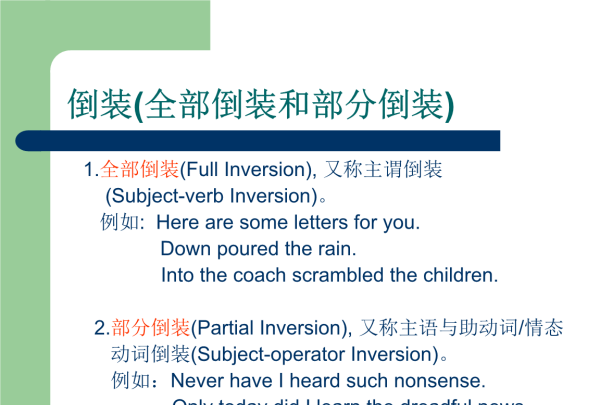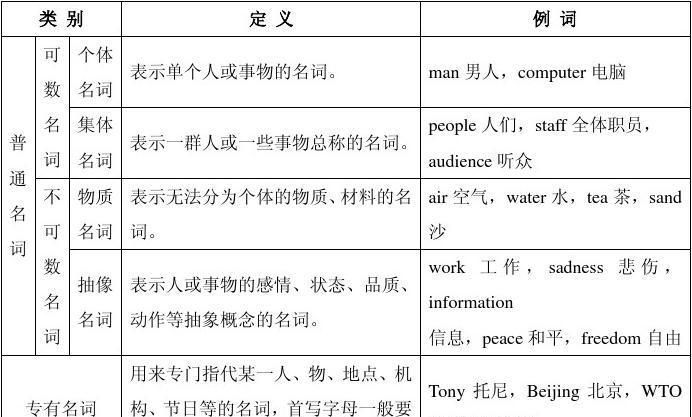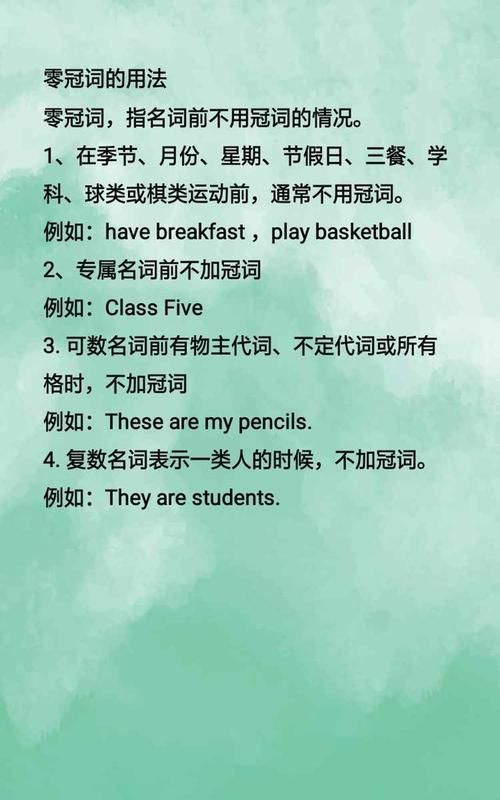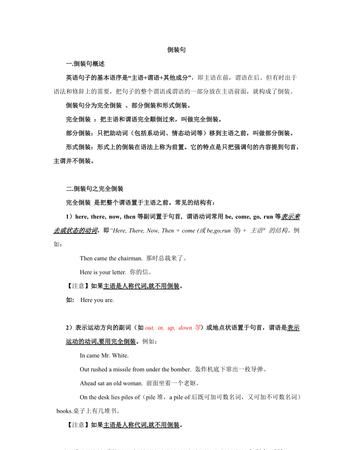本文目录
完全倒装和部分倒装的几种情况?
1、全部倒装
1) here, there, now, then, thus等副词置于句首, 谓语动词常用be, come, go, lie, run等表示来去或状态的动词。例如:
Then came the bus. Here is your letter.
2) 表示运动方向的副词或地点状语置于句首,谓语表示运动的动词。
Out rushed a boy。
Ahead sat an old woman.
但如果主语是人称代词,不能要倒装,比如:Here you are. Away they went.
2. 部分倒装
1) 句首为否定或半否定的词语,如no, not, never, seldom, little, hardly, at no time, in no way, not until… 等。
Never have I seen such a performance.
Not until the child fell asleep did the mother leave the room.
当Not until引出主从复合句,主句倒装,从句不倒装。注意: 如否定词不在句首不倒装。比如:I have never seen such a performance.
The mother didn't leave the room until the child fell asleep.
2)否定词开头作部分倒装
如 Not only…but also, Hardly/Scarcely…when, No sooner… than等,要倒装。例如:
Not only did he refuse the gift, he also severely criticized the sender.
Hardly had she gone out when a student came to visit her.
No sooner had she gone out than a student came to visit her.
3) so, neither, nor作部分倒装
用这些词表示"也"、"也不" 的句子要部分倒装。例如:
Tom can speak French. So can Jack.
If you won't go, neither will I.
4)only+ 副词/介词/状语从句位于句首,要部分倒装
Only in this way, can you learn English well.
Only after being asked three times did he come to the meeting.
如果句子为主从复合句,则主句倒装,从句不倒装。
Only when he is seriously ill does he ever stay in bed.
5)as, though 引导的倒装句
as / though引导的让步从句必须将表语或状语提前(形容词, 副词, 分词, 实义动词提前)。但需注意:
1) 句首名词不能带任何冠词。
2) 句首是实义动词, 其他助动词放在主语后。如果实义动词有宾语和状语,随实义动词一起放在主语之前。例如:
Try hard as he will, he never seems able to do the work satisfactorily.
注意:让步状语从句中,有though,although时,后面的主句不能有but,但是 though 和yet可连用。
6) 其他部分倒装
1)) so… that 句型中的so 位于句首时,需倒装。例如:
So frightened was he that he did not dare to move an inch.
2)) 在某些表示祝愿的句型中。例如:
May you all be happy. 愿你们都快乐。
3)) 在虚拟语气条件句中从句谓语动词有were, had, should等词,可将if 省略,把 were, had, should 移到主语之前,采取部分倒装。例如:
Were I you, I would try it again. 我是你的话,就再试一次。
其实学习倒装,值需要记得完全倒装,剩下的基本都是部分倒装,很好记的。

扩展资料:
主谓倒装
也叫谓语前置或主语后置。古汉语中。谓语的位置也和现代汉语中一样,一般放在主语之后,但有时为了强调和突出谓语的意义,在一些疑问句或感叹句中,就把谓语提前到主语前面。例:甚矣,汝之不惠。全句是“汝之不惠甚矣”。谓语前置,表强调的意味,可译为“你太不聪明 了”
宾语前置
否定句中代词充当宾语、疑问代词充当动词或介词的宾语以及用“之”字或“是”字作为提宾标志时,宾语通常都要前置。
文言文中,动词或介词的宾语,一般放置于动词或介词之后,如下几种情况除外:
①、疑问句中,疑问代词做宾语,宾语前置。这类的句子,介词的宾语也是前置的。
a 介宾倒装 例:“孔文子何以谓之‘文’也?” “何以”是“以何”的倒装,可译为“为什么” 微斯人,吾谁与归 ?“吾谁与归”是“吾与谁归”的倒装,可译为“我和谁同道呢?”
b谓宾倒装 例:何有于我哉?“何有”是“有何”的倒装。古汉语中,疑问代词做宾语时,一般放在谓语的前面。可译为“有哪一样”。孔子云:“何陋之有?” “何陋之有”即“有何陋”的倒装。可译为“有什么简陋呢?”“何”,疑问代词,“之”,助词,无实在意义,在这里是宾语前置的标志。
②、 文言否定句中,代词做宾语,宾语前置。例:僵卧孤村不自哀 “不自哀”是“不哀自”的倒装,可译为“不为自己感到悲哀”。“自”,代词,在否定句中,代词做宾语要前置。另如“忌不自信”,“自信”即“信自”,意相信自己。
③、 用“之”或“是”把宾语提于动词前,以突出强调宾语。这时的“之”只是宾语前置的标志,没有什么实在意义。例:"莲之爱,同予者何人?"——“莲之爱”即“爱莲”的倒装,可译为“对于莲花的喜爱”。" 孔子云:“何陋之有?” ——“何陋之有”即“有何陋”的倒装。可译为“有什么简陋呢”。这里的“之”,助词,无实在意义,在这里是宾语前置的标志。
④、 介词“以”的宾语比较活跃,即使不是疑问代词,也可以前置,表示强调。例:是以谓之“文”也。“是以”是“以是”的倒装,可译为“因此”。“是”是指示代词,指代前面的原因。
⑤、 其他,表示强调。万里赴戎机,关山度若飞 “关山度”是“度关山”的倒装。可译为“跨过一道道关,越过一道道山”。
定语后置
古汉语中有时为了突出修饰语,将定语放在中心词之后。
文言文中,定语的位置一般也在中心词前边,但有时为了突出中心词的地位,强调定语所表现的内容,或使语气流畅,往往把定语放在中心词之后。
①、“中心词+后置定语+者” 遂率子孙荷担者三夫 , “荷担者三夫”是“三夫荷担者”的倒装,定语“三夫”后置,以突出中心词“荷担者”,可译为“三个能挑担子的成年男子”。峰回路转,有亭翼然临于泉上者,醉翁亭也。“亭翼然临于泉上”是“翼然临于泉上亭 ”的倒装,定语后置,可译为“一座像鸟儿张开翅膀一样高踞在泉上的亭子。”
②、 “中心词+之+后置定语+者” 例:予谓菊,花之隐逸者也。“花之隐逸者”是“隐逸之花”的倒装。可译为“具有隐逸气质的花”
③、数量词做定语后置 例:尝贻余核舟一,“核舟一”是“一核舟”的倒装,定语“一”后置,可译为“一个核舟”
介宾结构后置
(也叫状语后置)
①、用介词“于”组成的介宾短语在文言文中大都后置,译成现代汉语时,除少数译作补语外,大多数都要移到动词前做状语。例:何有于我哉? 全句为“于我有何哉”的倒装句,介宾结构“于我”后置。
译为“在我身上有哪一样呢”“告之于帝”是“于帝告之”的倒装,介宾结构“于帝”后置,译为“向天帝报告了这件事”躬耕于南阳,苟全性命于乱世,全句为“于南阳躬耕,于乱世苟全性命”的倒装,介宾结构“于南阳、于乱世”后置,可译为“亲自在南阳耕种,在乱世中苟且保全性命”
②、介词“以”组成的介宾短语后置,在今译时,一般都前置做状语。例:屠惧,投以骨。全句为“以骨投之”的倒装,介宾结构“以骨”后置。译为“把骨头扔给它” 为坛而盟,祭以尉首。“祭以尉首”是“以尉首祭”的倒装,介宾结构“以尉首”后置,可译为“用将尉的头来祭祀” 醉能同其乐,醒能述以文者。
“述以文”是“以文述”的倒装,介宾结构“以文”后置,可译为“用文字来记述” 愿陛下托臣以讨贼兴复之效 “托臣以讨贼兴复之效”是“以讨贼兴复之效托臣”的倒装,介宾结构“以讨贼兴复之效”后置。
as引导的倒装句要加冠词吗
不是,你说的恰恰相反,as引起倒装时,这个冠词必须去掉
Clever child as he is,he makes mistakes.

英语倒装句怎么用?什么时候用?
英语句子表达的基本语序是“主语+谓语”.但在实际应用中,因语法结构的需要,或是为了强调,常把谓语移到主语之前,称为倒装.
英语的倒装结构有两种,其中较为常见的是部分倒装,即谓语的一部分移到主语之前.
如:Only when the war was over could he begin to work again.
只有在战争结束后他才能够重新开始工作.
另一种倒装是完全倒装结构,即把谓语的全部都移到主语之前.如:
1.Here comes the bus.公共汽车来了.
2.“But what the child said is true.” said the father.“可是孩子的话是对的.”父亲说.
下面详细归纳几种常用的倒装结构.
一、几种常见的部分倒装结构:
1.Only+状语或者状语从句放在句首.如:
Only in this way can we improve our English.只有这样,我们才能提高英语水平.
Only after you left did l find this bag.只是在你离开以后我才发现这只提包.
2.含否定意义并修饰全句的词放在句首.如:not,little, hardly, scarcely, no more, no longer, in no way, never, seldom, not only, no sooner等等.如:
1)Seldom do I go to work by bus. 我很少乘公共汽车上班.
2)Never shall I forget it. 我永远不会忘记这件事.
3)No sooner had I got home than it began to rain. 我刚一到家,天就开始下雨.
3.So放在句首,跟在一个肯定句之后,表示前面所述内容也适用于另一人或物.如:
1)l like travelling.So does he.我喜欢旅行,他也喜欢.
2)Her father is a doctor.So is her mother.她父亲是位医生,她母亲也是.
3)He has been to Beijing twice.So have I.他去过北京两次,我也去过两次.
4.Neither,nor或no more放在句首,作“也不”讲,跟在一个否定句之后,表示前面所述内容也适用于另一人或物.例如:
1)My teacher didn't agree with him.Nor did I.老师不同意他的意见,我也不同意.
2)I'm not interested in maths.Neither is he.我对数学不感兴趣,他也同样.
注:当前面陈述句有两个以上不同类型的谓语动词时,如be,do或can等等,或者既有肯定式又有否定式时,如have和hasn't等等,不能单独使用so或者neither/nor,而应换用另外的句型结构:
A:So it is with…;
B:It is the same with….请见例句:
1)—I like chicken, but I don't like fish. ——我喜欢吃鸡肉,但不喜欢吃鱼.
—So it is with me. ——我也如此.
2)Tom is an American,but lives in China,it is the same with Jack.
汤姆是美国人,但他住在中国.杰克也如此.
5.副词often,短语many a time,或者so修饰形容词或副词、位于句首时.例如:
1) So badly was he injured in the accident that he was sent to the hospital for treatment.
在这次事故中他伤得很重,被送进医院治疗.
2)So hard does he work that he has no time to spare for travelling.
他那么努力工作,抽不出时间去旅行.
6.虚拟条件句省略if时,将were,should或had移到主语之前.如:
1)Should it rain,all the crops would be saved.若是下雨的话,庄稼就都得救了.
2)Were my teacher here,he would give some good advice.
我的老师如果在这儿,他会提些好建议的.
3)Hadn't it been for his help,we wouldn't have finished the work in time.
若非有他帮忙,我们就不能及时完成工作.
7.以May…或Long live…开头的某些表示祝愿的用语.如:
1)May God bless you.愿上帝保佑你!
2)May you succeed!祝你成功!
3)Long live the people's Republic of China!
8.由as though引导的表示“虽然”,“尽管”的让步状语从句用倒装语序时,把从句的表语或状语等放在as/though的前面.例如:
1) Young as/though she was, she could work out that problem alone.
虽然她很小,但她却能独自解出那道难题.
2)Child as/though he is, he is very brave.尽管他是个孩子,但他却非常勇敢.
注意:如果从句中的表语是名词,其名词前不加任何冠词.
二、几种常见的完全倒装结构
1.there be句型:有时该句型中也可用其他表示存在意义的动词代替be.如:live,remain,come,stand,go,lie,exist等等.
1)There is a lamp and two cups on the table.桌上有一盏灯和两只杯子.
2)There used to be a shop around the corner.拐角处过去有一家商店.
3)Once upon a time there lived six blind men in a village in India.
从前在印度的一个村子里住着六位盲人.
2.主语必须是名词由here,there now, then等词开头的句子.如:
1)Here are some interesting stories for you to read这儿有些有趣的故事给你读.
2)There goes the bell.铃声响了.
3.表示方位的介词、副词放在句首.如:out,in,up,down,away等词.但应注意:句子的主语应是名词,若主语是代词,则不能倒装.如:
1)Out rushed the soldiers. 战士们冲了出去.
2)Away went the boy. 那男孩走开了.
请比较:
3)Away he went.他走开了.
4)Here he comes.他来了.
4.为了保持句子平衡,强调表语和状语,使句子上下紧密衔接.如:
1)At the entrance of the valley stood an old pine tree.
在峡谷的入口处耸立着一棵古老的松柏.
2)Round the corner came a motorcycle. 一辆摩托车从拐角处转了过来.
5.直接引语位于句首.如:
1)“I love you ,”whispered John. “我爱你.”约翰悄悄地说道.
2)“Help!Help!”cried the boy in the water. 水中的男孩大声呼喊着“救命啊!”
倒装结构是语言的一种表达形式,除了上述各种情况需要倒装以外,还有些被强调部分也常常可以提到句首,形成倒装.例如:
This they kept for themselves.这东西他们就据为己有了.
因此,如果正确使用倒装结构,可以使语言表达平地生辉.

英语中的倒装句结构及其用法
倒装句之全部倒装
全部倒装是只将句子中的谓语动词全部置于主语之前。此结构通常只用与一般现在时和 一般过去时。常见的结构有:
1) here, there, now, then, thus等副词置于句首, 谓语动词常用be, come, go, lie, run。
There goes the bell.
Then came the chairman.
Here is your letter.
2) 表示运动方向的副词或地点状语置于句首,谓语表示运动的动词。
Out rushed a missile from under the bomber.
Ahead sat an old woman.
注意:上述全部倒装的句型结构的主语必须是名词,如果主语是人称代词则不能完全倒装。
Here he comes. Away they went.
倒装句之部分倒装
部分倒装是指将谓语的一部分如助动词或情态倒装至主语之前。如果句中的谓语没有助动词或情态动词,则需添加助动词do, does或did,并将其置于主语之前。
1) 句首为否定或半否定的词语,如no, not, never, seldom, little, hardly, at no time, in no way, not until… 等。
Never have I seen such a performance.
Nowhere will you find the answer to this question.
Not until the child fell asleep did the mother leave the room.
当Not until引出主从复合句,主句倒装,从句不倒装。
注意: 如否定词不在句首不倒装。
I have never seen such a performance.
The mother didn't leave the room until the child fell asleep.
典型例题
1) Why can't I smoke here?
At no time___ in the meeting-room
A. is smoking permitted B. smoking is permitted
C. smoking is it permitted D. does smoking permit
答案A. 这是一个倒装问题。当否定词语置于句首以表示强调时,其句中的主谓须用倒装结构。 这些否定词包括no, little, hardly, seldom, never, not only, not until等。本题的正常语序是 Smoking is permitted in the meeting-room at no time.
2) Not until the early years of the 19th century ___ what heat is.
A. man did know B. man know C. didn't man know D. did man know
答案D. 看到Not until…的句型,我们知道为一倒装句,答案在C,D 中选一个。
改写为正常语序为,Man did not know what heat is until the early years of the 19th. 现在将not提前,后面就不能再用否定了,否则意思就变了。
以否定词开头作部分倒装
如 Not only…but also, Hardly/Scarcely…when, No sooner… than
Not only did he refuse the gift, he also severely criticized the sender.
Hardly had she gone out when a student came to visit her.
No sooner had she gone out than a student came to visit her.
典型例题
No sooner___ than it began to rain heavily.
A. the game began B. has the game begun
C. did the game begin D. had the game begun
答案D. 以具有否定意义的副词放在句首时,一般采用倒装句(谓语前置)。这类表示否定意义的词有never, seldom, scarcely, little, few, not, hardly, 以及not only…but (also), no sooner…than, hardly… when scarcely… when 等等。
注意:只有当Not only… but also连接两个分句时,才在第一个分句用倒装结构。如果置于句首的Not only… but also仅连接两个并列词语,不可用倒装结构。
Not only you but also I am fond of music.
so, neither, nor作部分倒装
表示"也"、"也不" 的句子要部分倒装。
Tom can speak French. So can Jack.
If you won't go, neither will I.
典型例题
---Do you know Jim quarrelled with his brother?
---I don't know, _____.
A. nor don't I care B. nor do I care C. I don't care neither D. I don't care also
答案:B. nor为增补意思"也不关心",因此句子应倒装。A错在用 don't 再次否定, C neither 用法不对且缺乏连词。 D缺乏连词。
注意: 当so引出的句子用以对上文内容加以证实或肯定时,不可用倒装结构。意为"的确如此"。
Tom asked me to go to play football and so I did.
---It's raining hard. ---So it is.
only在句首要倒装的情况
Only in this way, can you learn English well.
Only after being asked three times did he come to the meeting.
如果句子为主从复合句,则主句倒装,从句不倒装
Only when he is seriously ill, does he ever stay in bed.
as, though 引导的倒装句
as / though引导的让步从句必须将表语或状语提前 (形容词, 副词, 分词, 实义动词提前)。
注意:
1) 句首名词不能带任何冠词。
2) 句首是实义动词, 其他助动词放在主语后。如果实义动词有宾语和状语, 随实义动词一起放在主语之前。
Try hard as he will, he never seems able to do the work satisfactorily.
注意:
让步状语从句中,有though,although时,后面的主句不能有but,但是 though 和yet可连用。
其他部分倒装
1) so… that 句型中的so 位于句首时,需倒装。
So frightened was he that he did not dare to move an inch.
2) 在某些表示祝愿的句型中:
May you all be happy.
3) 在虚拟语气条件句中从句谓语动词有were, had, should等词,可将if 省略,把 were, had, should 移到主语之前,采取部分倒装。
Were I you, I would try it again.
典型例题:
1) Not until the early years of the 19th century___ what heat is
A. man did know B. man knew C. didn't man know D. did man know
答案为D. 否定词Not在句首,要求用部分倒装的句子结构。
2) Not until I began to work ___ how much time I had wasted.
A. didn't I realize B. did I realize C. I didn't realize D. I realize
答案为B。
3) Do you know Tom bought a new car?
I don't know, ___.
A. nor don't I care B. nor do I care
C. I don't care neither D. I don't care also
解析:答案为B. 句中的nor引出部分倒装结构,表示"也不"。由 so, neither, nor引导的倒装句,表示前一情况的重复出现。其中, so用于肯定句, 而 neither, nor 用在否定句中。

以上就是关于倒装不能用冠词名词 ,完全倒装和部分倒装的几种情况?的全部内容,以及倒装不能用冠词名词 的相关内容,希望能够帮到您。
